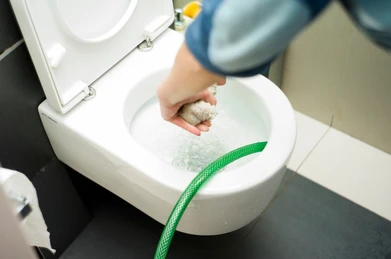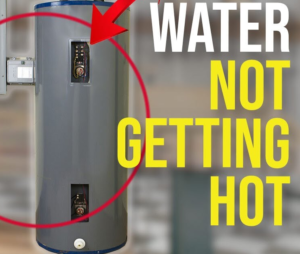A running toilet can be a frustrating and costly problem. It wastes water, increases your utility bills, and can become a bigger issue if not addressed quickly. While it might seem like a minor inconvenience, understanding the root causes of a running toilet can save you time, money, and the hassle of unnecessary repairs. In this article, we’ll explore why your toilet keeps running and, most importantly, how to fix it.
Common Causes of a Running Toilet
Before we dive into the fixes, it’s crucial to identify the main reasons why your toilet might be running continuously. There are a few common causes:
1. Faulty Flapper
The flapper is the rubber piece at the bottom of the toilet tank that covers the flush valve. Its primary function is to lift and allow water to flow into the bowl when you flush, then seal the tank once enough water has drained. Over time, flappers can wear out, becoming warped or brittle, which causes them not to seal properly, leading to a continuous water flow.
2. Chain Problems
The chain connected to the flapper may be too long or too short. If it’s too long, it might get tangled or stuck under the flapper, preventing it from sealing correctly. If it’s too short, it might lift the flapper too high, which can also prevent it from sealing properly.
3. Float Issues
The float is what controls the water level in the tank. If it’s set too high, the water level will keep rising after a flush, causing the toilet to run. On the other hand, if the float is too low, your toilet may not flush properly. Adjusting the float is often a quick fix to resolve running issues.
4. Worn-Out Fill Valve
The fill valve is responsible for refilling the tank after a flush. If the fill valve is damaged or worn out, it can cause the toilet to keep running. You’ll often hear a hissing sound if this is the culprit.
5. Leaky Flush Valve
The flush valve is where the water flows from the tank to the bowl. If there is a leak around the valve or if the gasket that seals it becomes worn or cracked, water will seep into the bowl continuously.
6. Mineral Buildup
In areas with hard water, minerals can accumulate inside the toilet tank, clogging or interfering with various components. This buildup can prevent parts like the flapper, fill valve, or flush valve from working correctly, causing your toilet to run.
How to Fix a Running Toilet
Now that we’ve identified the common causes of a running toilet, let’s explore how to stop it. The good news is that most fixes are straightforward and don’t require professional assistance.
1. Check and Replace the Flapper
As one of the most common causes of a running toilet, checking the flapper should be your first step. Here’s how to replace it:
- Turn off the water supply to the toilet by turning the valve located behind the toilet.
- Flush the toilet to empty the tank.
- Examine the flapper. If it’s warped, cracked, or doesn’t sit correctly over the flush valve, it needs replacing.
- Buy a replacement flapper from a hardware store. They are inexpensive and come in standard sizes, though you’ll want to match it to your toilet model.
- Install the new flapper by attaching it to the flush valve and connecting the chain to the handle.
- Turn the water back on and flush the toilet to check if the issue is resolved.
2. Adjust the Chain
If the chain is too short or too long, adjust it to the proper length:
- Turn off the water supply to avoid unnecessary water flow while adjusting.
- Inspect the chain length. It should have a slight amount of slack but not so much that it gets tangled or caught under the flapper.
- Reposition the chain to achieve the proper tension. You may need to move the hook or link it higher on the lever to shorten it.
- Turn the water back on and test the toilet. If the chain is adjusted correctly, the flapper should seal without being hindered.
3. Adjust the Float
If the float is causing the water level to rise too high, it will trigger the fill valve to keep running. Here’s how to adjust it:
- Locate the float inside the tank. Depending on your toilet model, you’ll either have a ball float or a cup float.
- For a ball float, gently bend the arm down to lower the water level. For a cup float, find the adjustment screw on the fill valve and turn it counterclockwise to lower the float.
- Flush the toilet to test the water level. The water should stop about an inch below the top of the overflow tube. If the float is set correctly, the running should stop.
4. Replace the Fill Valve
If the fill valve is damaged or worn out, it will need replacing. Here’s how:
- Turn off the water supply and flush the toilet to empty the tank.
- Unscrew the water supply line from the bottom of the tank.
- Remove the old fill valve by unscrewing the mounting nut underneath the tank.
- Install the new fill valve by following the manufacturer’s instructions. Be sure to adjust the water level according to the tank’s markings.
- Reconnect the water supply and turn it back on. Test the toilet by flushing to ensure the new fill valve works properly.
5. Clean Mineral Buildup
If mineral deposits are causing issues, cleaning the tank components can help restore normal functioning:
- Turn off the water supply and flush the toilet to empty the tank.
- Use a sponge or cloth to wipe away any visible mineral deposits around the flapper, flush valve, and fill valve.
- Soak any affected components in a solution of vinegar and water to dissolve stubborn buildup.
- Rinse and reinstall the parts before turning the water back on and testing the toilet.
Preventing Future Running Toilets
Once you’ve successfully stopped your toilet from running, it’s a good idea to take some preventive measures to avoid the issue from recurring.
1. Regular Maintenance
Perform regular checks of your toilet’s internal components. Inspect the flapper, fill valve, and other parts for wear and tear every few months. Replace any worn-out components before they cause a running issue.
2. Use Water Softeners
If you live in an area with hard water, consider installing a water softener. This can prevent mineral buildup inside the tank and prolong the life of your toilet components.
3. Handle Your Toilet Gently
Avoid slamming the toilet handle when flushing, as this can cause the chain or flapper to misalign. Gentle flushing helps maintain the integrity of the internal parts.
4. Don’t Use Chemical Cleaners in the Tank
While it’s tempting to use drop-in cleaners for convenience, they can degrade the rubber components inside your toilet, like the flapper. Instead, opt for manual cleaning methods that won’t damage the toilet’s internal mechanisms.
When to Call a Professional
While many running toilet issues can be resolved with DIY methods, some problems may require the expertise of a plumber. If your toilet continues to run after you’ve tried these fixes or if you’re unsure about handling certain components, it’s best to call a professional. They can assess the situation and ensure the proper parts are installed and functioning correctly.
Conclusion
A running toilet is not only annoying but can also lead to significant water waste and higher utility bills. By identifying the root cause—whether it’s a faulty flapper, chain issues, or a malfunctioning fill valve—you can take quick action to fix the problem. Most repairs are simple and can be handled with basic tools, saving you the cost of a professional plumber. With a little know-how and preventive maintenance, you can keep your toilet running smoothly and avoid future issues.
FAQ
1. Why is my toilet constantly running?
A running toilet is usually caused by a malfunctioning flapper, a faulty fill valve, or an incorrect float height, all of which prevent the tank from sealing or filling properly.
2. How do I check if the flapper is the problem?
You can check the flapper by removing the toilet tank lid and observing if the rubber flapper is sealing the flush valve correctly. If it’s worn out or not fitting properly, it might be the cause of your running toilet.
3. What can I do if the flapper is worn out?
If the flapper is worn, cracked, or warped, replacing it with a new one can usually solve the problem. Ensure the replacement flapper matches the size and style of your toilet.
4. Could the fill valve be the issue?
Yes, if the fill valve is not shutting off properly, it could cause the toilet to run continuously. Adjusting or replacing the fill valve can usually fix this issue.
5. How do I adjust the float to stop my toilet from running?
The float controls the water level in the tank. If it’s set too high, the tank may overflow and the toilet will keep running. Adjust the float to lower the water level below the overflow tube.
6. Can a leaking flush valve cause my toilet to run?
Yes, a worn-out or damaged flush valve can allow water to constantly leak into the toilet bowl, causing it to run. Replacing the flush valve is a common fix.
7. Are there any tools needed to stop a running toilet?
In most cases, you’ll only need a basic wrench, screwdriver, or pliers to adjust or replace parts like the fill valve, flapper, or flush valve.
8. What should I do if adjusting or replacing parts doesn’t stop the running toilet?
If the issue persists after trying these fixes, it might be time to consult a plumber. There could be a more complex problem, such as a cracked tank or a blocked valve.
9. Can a running toilet increase my water bill?
Yes, a continuously running toilet can waste a significant amount of water, leading to higher water bills. Fixing it promptly can save both water and money.
10. How can I prevent my toilet from running in the future?
Regularly inspecting and maintaining the parts inside the toilet tank, such as the flapper and fill valve, can help prevent future running issues.





